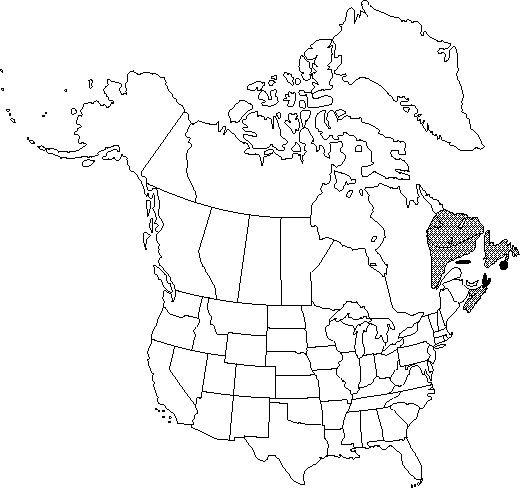Betula michauxii
Ann. Sci. Nat., Bot., sér. 2, 15: 195. 1841.
Shrubs, spreading, dwarfed, to ca. 0.5 m. Bark dark brown, smooth, close; lenticels pale, inconspicuous, circular. Twigs without taste and odor of wintergreen, moderately to densely pubescent, not conspicuously resin-coated, without large, warty, resinous glands. Leaf blade obovate–reniform, with 2–3 pairs of lateral veins, 0.5–1 × 0.5–1.2 cm, base cuneate, margins deeply crenate-dentate, apex broadly rounded to nearly truncate; surfaces abaxially usually glabrous. Infructescences erect, short-cylindric, 0.5–1 × 0.5–0.8 cm, shattering with fruits in fall; scales unlobed (lateral lobes sometimes present but greatly reduced), glabrous. Samaras with wings not apparent or reduced to narrow ridges.
Phenology: Flowering late spring.
Habitat: Sphagnum bogs, around pools, and wet peaty meadows
Elevation: 0–700 m
Distribution

St. Pierre and Miquelon, Nfld. and Labr., N.S., Que.
Discussion
This infrequent dwarf birch is distinguished from Betula nana mostly on the basis of its reduced infructescence scales and wetter habitat (J. J. Furlow 1984), characteristics that are also occasionally noted in B. nana. It perhaps might better be treated as a race of that species; in the absence of thorough study of this complex, however, it seems best to follow the traditional treatment (M. L. Fernald 1950c; J. Rousseau and M. Raymond 1950).
Selected References
None.